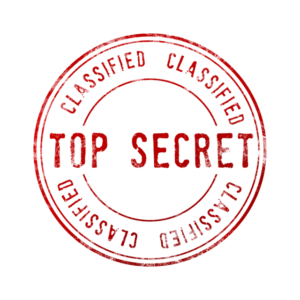
This is the third blog in our series on trade secrets and the methodologies utilized in calculating trade secret misappropriation damages. In the previous blog, we discussed the Wellogix, Inc. v. Accenture, L.L.P. case where the flexible approach to trade secret damages calculations was utilized by the expert to determine compensatory damages based on the investment value of Wellogix. In this blog, we are reviewing the Waymo, LLC, v. Uber Technologies, Inc. case which provides a cautionary tale of what can happen when a expert does not align his or her opinion with the requirements of the flexible approach to trade secret damages.
In this case, Waymo filed suit against Uber after a former manager of Waymo’s self-driving car project allegedly misappropriated Waymo’s trade secrets in the creation of his new company, Otto, which was quickly acquired by Uber for nearly $700 million to further the development of Uber’s self-driving car initiatives. Waymo’s complaint alleged a number of causes of action, including the violation of Defense of Trade Secret Act against Uber. The facts of this case have been widely publicized given the companies involved and the $2.7 billion in damages requested by Waymo. Rather than restating the facts and procedural background of this case, this blog is focused on the damages methodology and how the failure to adhere to the principles described in the previous blogs led the Judge to exclude the damages expert’s testimony and opinion.
The information contained in this blog is derived from United States District Judge Willian Alsup’s November 2, 2017 order following Uber’s motion to exclude Waymo’s damages expert and to exclude evidence of financial information presented by the expert, which was granted in part and denied in part. Judge Alsup’s order included an analysis of the following factors that must be present for a witness to testify: (a) the expert’s scientific, technical, or other specialized knowledge will help the trier of fact to understand the evidence or to determine a fact in issue; (b) the testimony is based on sufficient facts or data; (c) the testimony is the product of reliable principles and methods; and (d) the expert has reliably applied the principles and methods to the facts of the case.
As discussed in the previous blogs in this series, the courts, especially in trade secret cases, have recognized that the various forms of damages in misappropriation cases necessitate the use of a flexible approach to calculating damages for claims of misappropriate of trade secrets. However, the flexible approach to calculating damages does not require the court to ignore the factors described by Judge Alsup that must be present for an expert witness to testify. In this case, Judge Alsup concluded that the expert’s opinions must be excluded because they do not qualify as expert testimony and because they are substantially more prejudicial than probative. The following discussion focuses on Judge Alsup’s opinion regarding what factors were not met by the expert and why the failure to meet these factors could not be overcome by reliance on the flexible approach.
The first factor outlined by Judge Alsup is the requirement that the expert’s scientific, technical, or other specialized knowledge will help the trier of fact to understand the evidence or to determine a fact in issue. Regarding this factor, Judge Alsup stated that the evidence relied upon by Waymo’s damages expert “can speak for itself, and his only contribution would be to pile on a misleading façade of expertise.” This conclusion is based on Judge Alsup’s belief that the expert “essentially parroted” the opinion of another Waymo expert and “applied no ‘specialized knowledge’ by simply multiplying” the time savings opinion of the other expert by a dollar figure pulled from an internal Uber presentation. The failure to meet the requirement of specialized knowledge to assist the trier of fact is summarized by Judge Alsup when he stated that “[s]traighforward application of grade-school arithmetic to uncomplicated numbers is well within the ken of the average juror.” Due to the lack of specialized knowledge utilized by the expert, Judge Alsup believed that the expert’s analysis was “nothing more than lawyer argument dressed up as expert opinion” and therefore ruled that the expert’s opinion should be excluded due to “its danger of confusing the issues, misleading the jury, and causing unfair prejudice.”
Judge Alsup also highlighted the requirement that the expert’s testimony is based on sufficient facts and the product of reliable principle and methods. This requirement was not met, according to Judge Alsup’s order, on multiple occasions when the expert relied upon the full value of an acquisition to opine on the value of one or more misappropriated trade secrets. Judge Alsup noted that the expert agreed that the full value of these acquisitions included a number of benefits outside of the trade secret, such as employees, tangible property, and certain legitimate forms of intellectual property. However, the application of the full value of the acquisition to a single trade secret was described by Judge Alsup as “absurd” since the expert “did no work whatsoever to account for the value of those legitimate benefits.” This approach of using the full value to determine damages was discussed in the previous blog where we highlighted the efforts of the expert in the Wellogix case to overcome any argument that the selected methodology was the least speculative and could be relied upon by the jury. The failure by Waymo’s expert to conduct a similar analysis led Judge Alsup to exclude his testimony.

